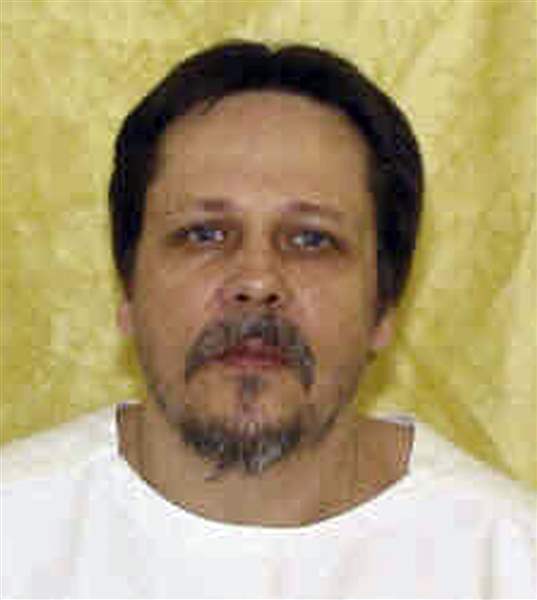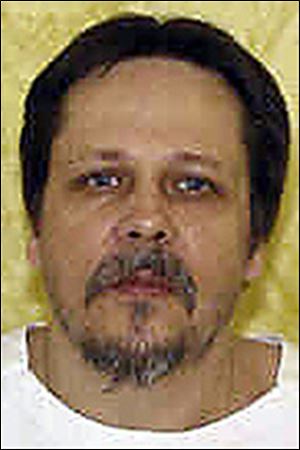
Calif. anesthesiologist: Ohio murderer suffered in January execution
8/13/2014
FILE- In this undated file photo provided by the Ohio Department of Rehabilitation and Correction shows Dennis McGuire. California doctor Kent Diveley says neither of the drugs used to execute McGuire in January can be relied on to produce a rapid loss of consciousness and death. Diveley said in a report released by attorneys for McGuires family Tuesday, Aug 12, 2014 that the execution was not humane from a medical perspective. (AP Photo/Ohio Department of Rehabilitation and Correction, File)
ASSOCIATED PRESS

McGuire
COLUMBUS — Dennis McGuire experienced “true pain and suffering” in his Jan. 16 execution in Ohio, a California anesthesiologist said in a sworn statement with a civil-rights lawsuit filed by McGuire’s children.
“To a degree of medical certainty this was not a humane execution,” Dr. Kent Diveley, an anesthesiologist at Scripps Mercy Hospital in San Diego, said in an affidavit obtained for the lawsuit. He is an expert paid by McGuire’s attorneys, who now represent McGuire’s son and daughter.
Dr. Diveley’s opinion sharply contrasts with an Ohio Department of Rehabilitation and Correction report in April that said McGuire “did not experience any pain or distress” during his execution.
McGuire, 53, gasped, choked, clenched his fists, and appeared to struggle against his restraints for about 10 minutes after the administration of two drugs, midazolam and hydromorphone, before being pronounced dead at the Southern Ohio Correctional Facility near Lucasville.
It took 26 minutes for him to die after the drugs were administered, the longest in Ohio’s history of executions going back to 1999.
McGuire was put to death for the 1989 murder of 22-year-old Joy Stewart, newly married and pregnant.
Dr. Diveley’s three-page statement was released Monday by Jon Paul Rion, the McGuire children’s Dayton attorney. Dr. Diveley examined the timeline of McGuire’s execution, the prison execution policy, and other documents — but not the inmate’s body, which was cremated.
Dr. Diveley said that neither of the two drugs “combined in the doses can be depended upon to produce a rapid loss of consciousness and death ... It is possible when this combination of drugs is used for lethal injection there will be a delay of several minutes before the inmate loses consciousness preceding death.”
He concluded that the two-drug combination does not “provide for an execution in a professional, humane, sensitive, and dignified manner.”
The prison report said McGuire’s bodily movements were “consistent with the effects of the drugs, his obesity, and other body characteristics, and involuntary muscle contractions associated with the ending of respiratory function.”
The report concluded: “DRC is confident that inmate McGuire was not conscious beginning a few minutes after the drugs were administered. He did not experience pain, distress, or air hunger after the drugs were administered or when the bodily movements and sounds occurred.”
The state plans to use the same drugs, but in higher doses, in the next execution.
That won’t happen this year, however, because on Monday, U.S. District Court Judge Gregory Frost extended a moratorium on executions in Ohio until at least Jan. 15, citing the continuing debate over drugs. McGuire was the only person executed this year.